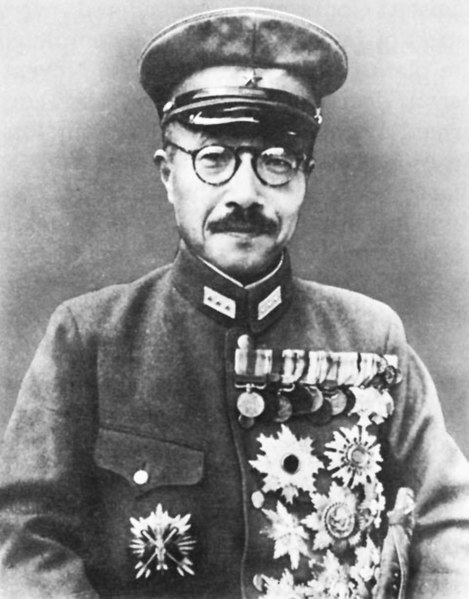The Tōseiha or Control Faction (統制派) was a political faction in the Imperial Japanese Army active in the 1920s and 1930s. The Tōseiha was a grouping of generally conservative officers united primarily by their opposition to the radical Kōdōha faction and its aggressive imperialist and anti-modernization ideals. The Tōseiha rivaled the Kōdōha for influence in the army until the February 26 Incident in 1936, when the Kōdōha was de facto dissolved and many supporters were disciplined or executed. The Tōseiha became the primary influence in the army, but the Kōdōha ideology and its supporters continued to influence Japanese militarism into the late 1930s.
Lieutenant General Tetsuzan Nagata was the leader of the Tōseiha until his assassination in the Aizawa Incident in August 1935.
Hideki Tōjō, the Prime Minister of Japan during much of World War II, was a member of the Tōseiha.
The Kōdōha or Imperial Way Faction (皇道派) was a political faction in the Imperial Japanese Army active in the 1920s and 1930s. The Kōdōha sought to establish a military government that promoted totalitarian, militaristic and aggressive expansionistic ideals, and was largely supported by junior officers. The radical Kōdōha rivaled the moderate Tōseiha for influence in the army until the February 26 Incident in 1936, when it was de facto dissolved and many supporters were disciplined or executed.
General Sadao Araki was regarded as the leader and primary philosopher of the Kōdōha.



